The perfect 6-inch Small Vanilla Cake topped with vanilla buttercream. This tiny one layer cake is very easy to make and has an incredibly soft and tender crumb. It’s perfect for birthdays or celebrations. Makes just 4-6 slices.
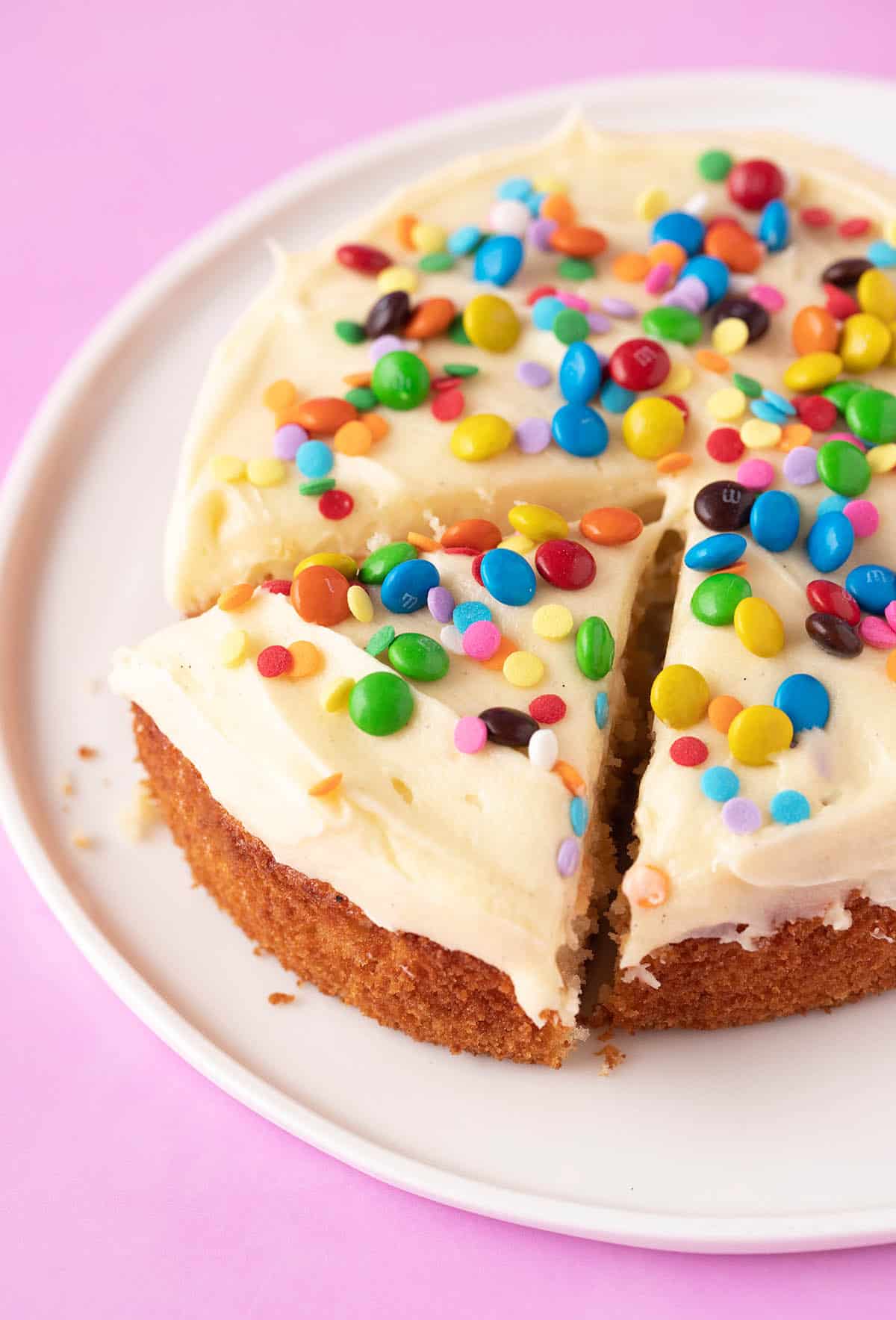
Meet my favourite Small Vanilla Cake 💜
A tiny 6-inch one layer cake that will easily serve 2, 4 or 6. It’s soft, buttery and bursting with vanilla flavour. Just like my favourite Vanilla Layer Cake, it uses the reverse creaming method to ensure a surprisingly tender crumb (every time).
Delightfully small, deliciously sweet and perfect for your next party 🎉
why you will love this recipe
- It makes just one 6-inch cake
- It has a soft, tender, buttery crumb
- And an easy buttercream frosting
- It’ll serve just 2, 4 or 6 people
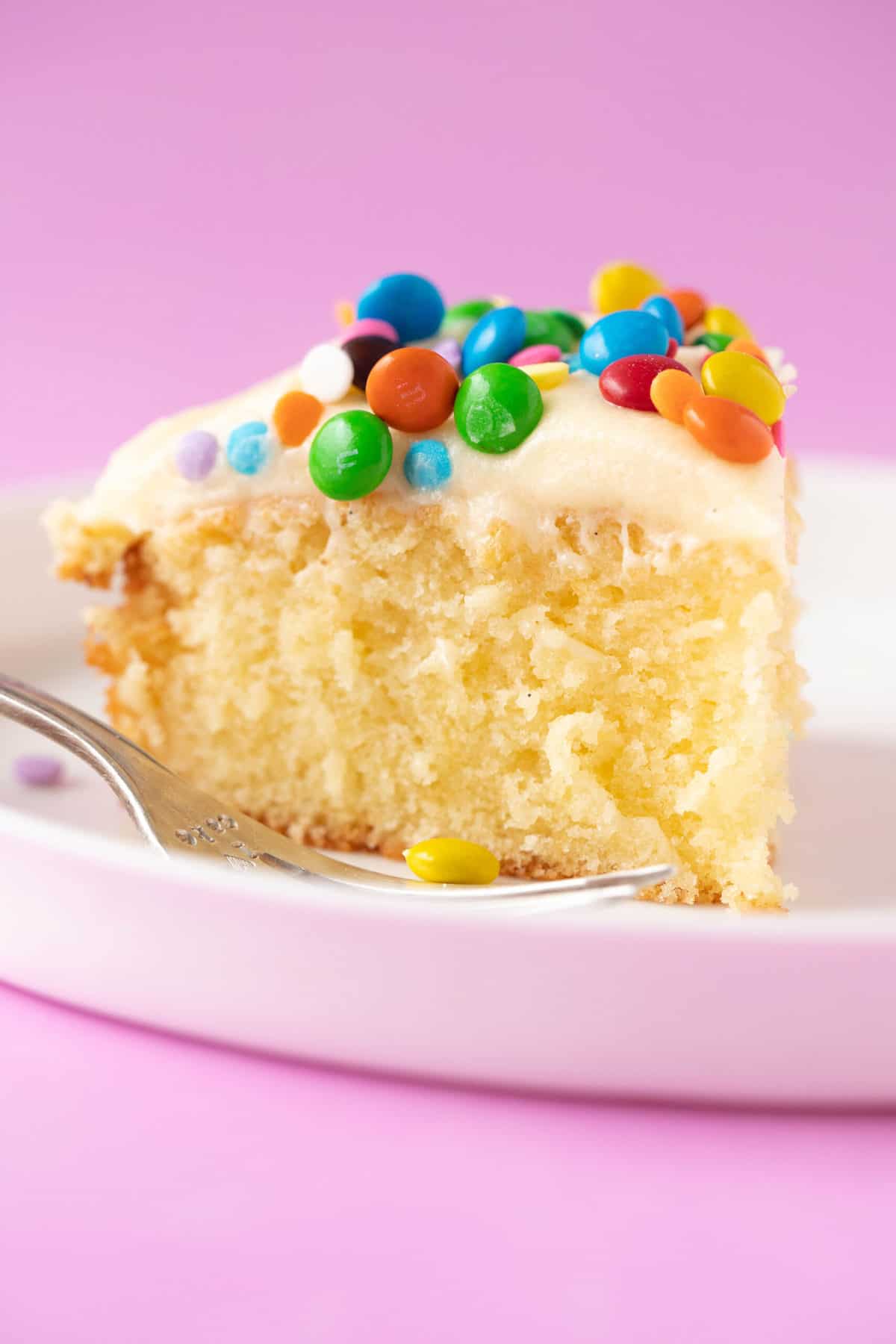
recipe testing
We are back with another amazing Small Batch recipe this week. After making our glorious Small Chocolate Cake and my Small Red Velvet Cake, I couldn’t wait to scale down another one of our favourites.
This time, we took my popular Vanilla Cake recipe and turned it into a delightfully small 6-inch cake. It boasts the same soft and tender crumb, buttery vanilla flavour and golden crust. But it’ll make just 4 or 6 small slices.
It uses the reverse creaming method (more on that below) to achieve a light and fluffy texture. And its frosted with a scaled down version of my favourite buttercream. It’s perfect for gifting or for smaller celebrations.
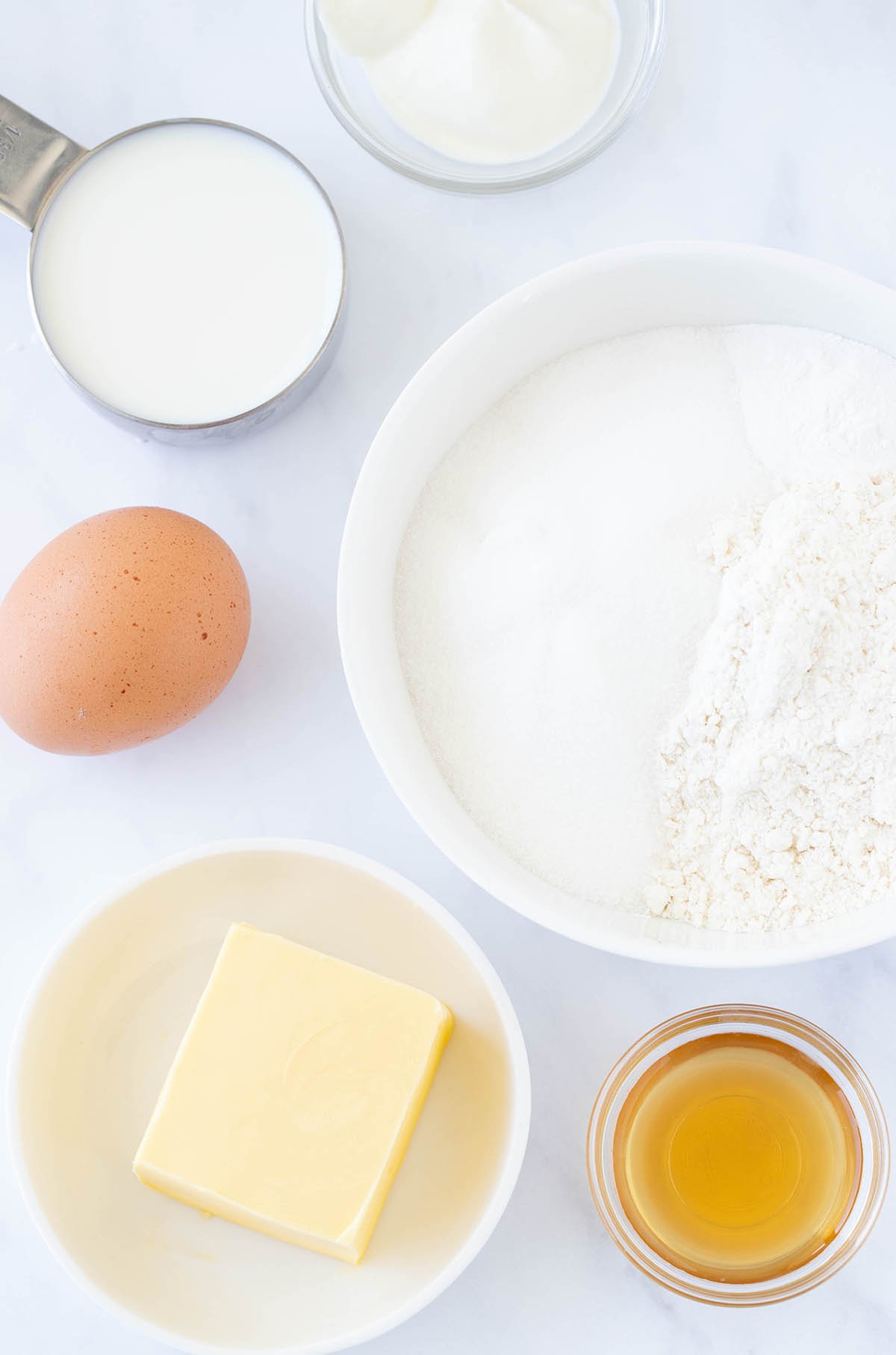
what you will need
You only need a handful of everyday ingredients to make this Small Vanilla Cake.
- Plain flour: Or all purpose flour.
- Caster sugar: Or granulated sugar.
- Baking powder: For lift.
- Salt
- Unsalted butter: If you use salted butter, omit the salt listed in the recipe ingredients.
- Egg
- Vanilla extract: We use plenty of vanilla extract for flavour. Don’t use vanilla essence.
- Milk: Full fat or whole milk is best.
- Greek yogurt: Use full fat Greek yogurt or full fat sour cream. This acidic ingredient helps create a nice, soft, tender crumb.
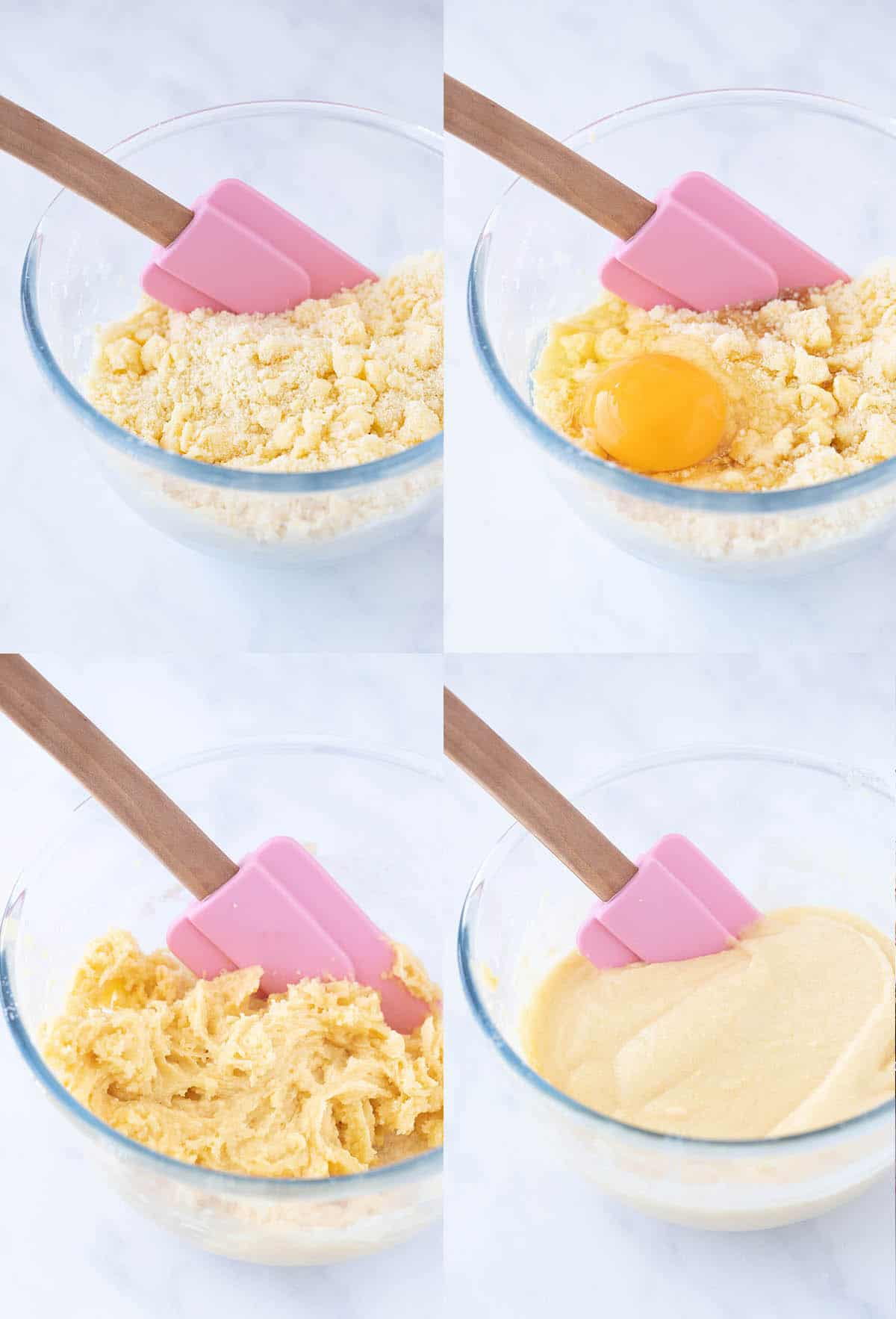
what is the reverse creaming method?
You might be familiar with the more common ’creaming’ method used to make cakes. Here you start by mixing together your butter and sugar until it turns pale and becomes almost fluffy.
This technique not only helps dissolve the sugar, but it creates air bubbles in the mixture, resulting in a light and fluffy crumb. I use the creaming method in my Pound Cake and Butter Cake recipes.
So what is the reverse creaming method? Good question, I’m glad you asked.
Instead of starting with only your butter and sugar, this technique begins with your dry ingredients. Once the flour, sugar, baking powder and salt are gently whisked together, then the butter is added.
The butter is mixed until it breaks up into small pea-like pieces, and each piece is completely coated in flour. Then the eggs are added, followed by any liquids, like milk or yogurt.
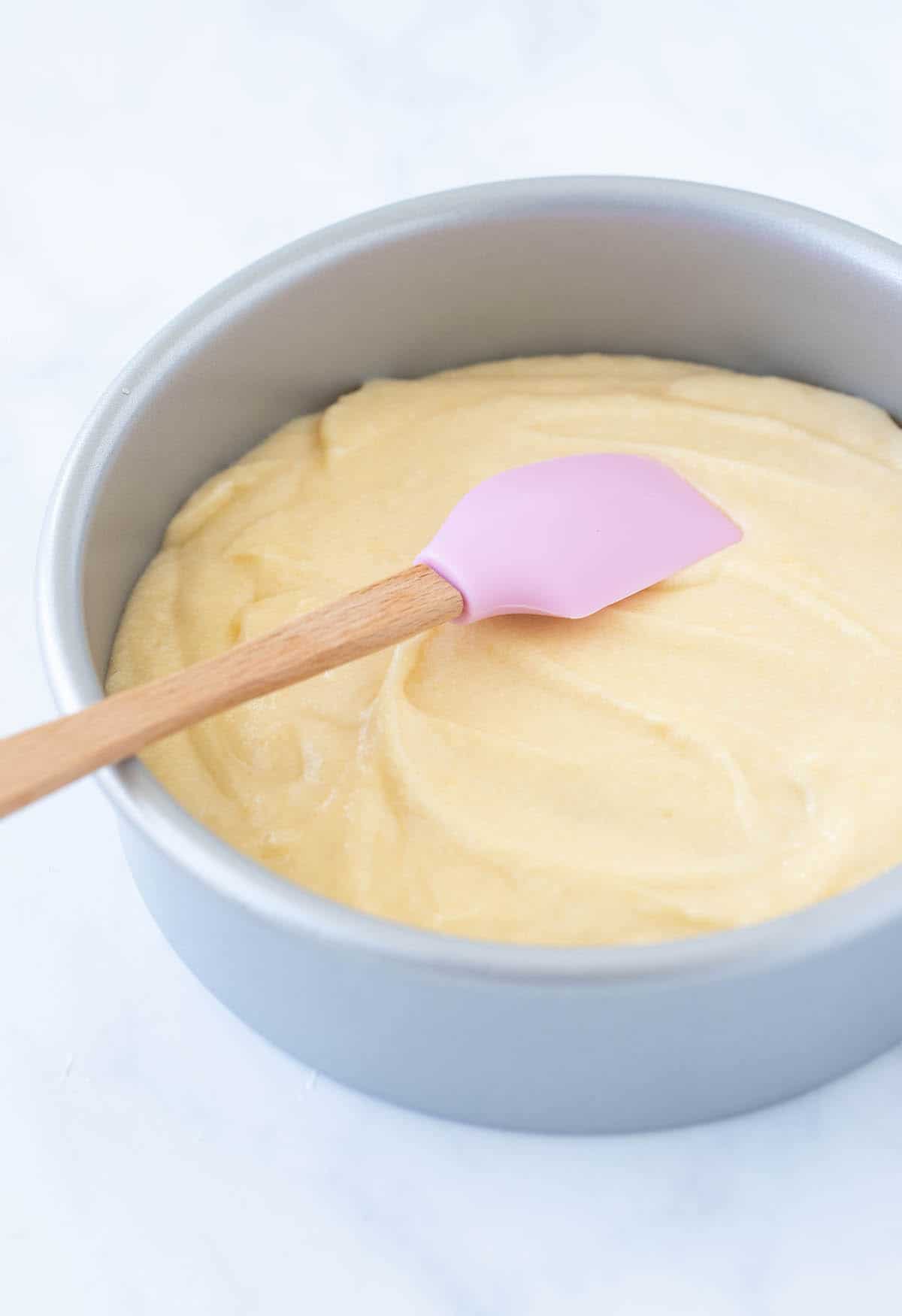
Why do we use the reverse creaming method?
By coating the butter in flour, and essentially the flour in butter, you create a barrier which slows down the development of gluten once you add the wet ingredients. While some gluten is necessary for structure, too much will result in a dry, tough cake.
Therefore, the reverse creaming method should create a soft, tender crumb, with an almost velvety texture. This is perfect for Vanilla Cakes where without strong flavours and textures (like chocolate), there’s really no where to hide.
And in my opinion, this method is a little more foolproof than the traditional creaming method which relies heavily on the baker’s ability to correctly cream the butter and sugar (and not over- or under-mix).
Note: Both creaming methods require softened butter for best results.
I use the reverse creaming method in both my Coconut Cake and my Vanilla Cake recipes.
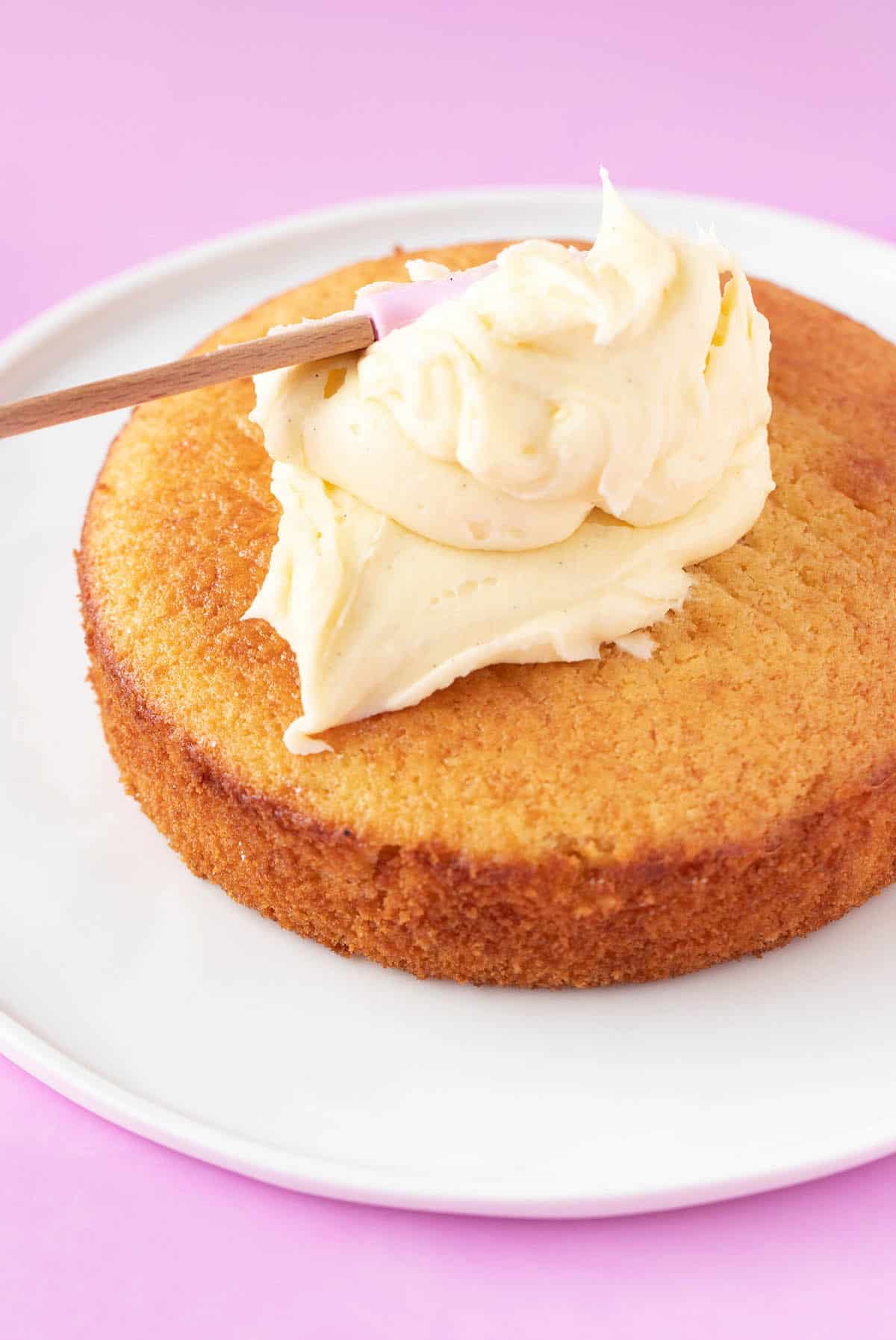
tips for perfect vanilla cake
- Weigh your ingredients: For best results, I highly recommend weighing your ingredients using a baking scale. It’s very easy to over-measure ingredients like flour when using cup measurements. And because we are dealing with such a small amount of cake batter, all measurements need to be spot on.
- Use softened butter: Start with room temperature butter so it’s easy to mix. If your butter is too cold, you’re likely to end up with lumps of butter in your cake batter.
- Avoid over-mixing your cake batter: Once your batter is combined and creamy, you can stop mixing. Over-mixing can result in a dry or tough cake.
- Don’t over-bake your cake: You’ll know your cake is ready when a skewer inserted in the middle comes out clean. Your cake should be golden all over and no longer have a sticky or wet top.
how to make vanilla buttercream
I’ve chosen to pair this Small Vanilla Cake, with a really quick and easy vanilla buttercream. You only need five ingredients, and it takes just 10 minutes to make. This is a scaled down version of my popular Vanilla Frosting recipe. Here’s how to make it:
- Start with room temperature butter. Use an electric mixer to beat the butter until it’s smooth and creamy. If your butter is nice and soft, this should only take a minute or two.
- Add vanilla, sugar (make sure it’s sifted), salt and milk. Mix until ingredients are combined and frosting is smooth and creamy.
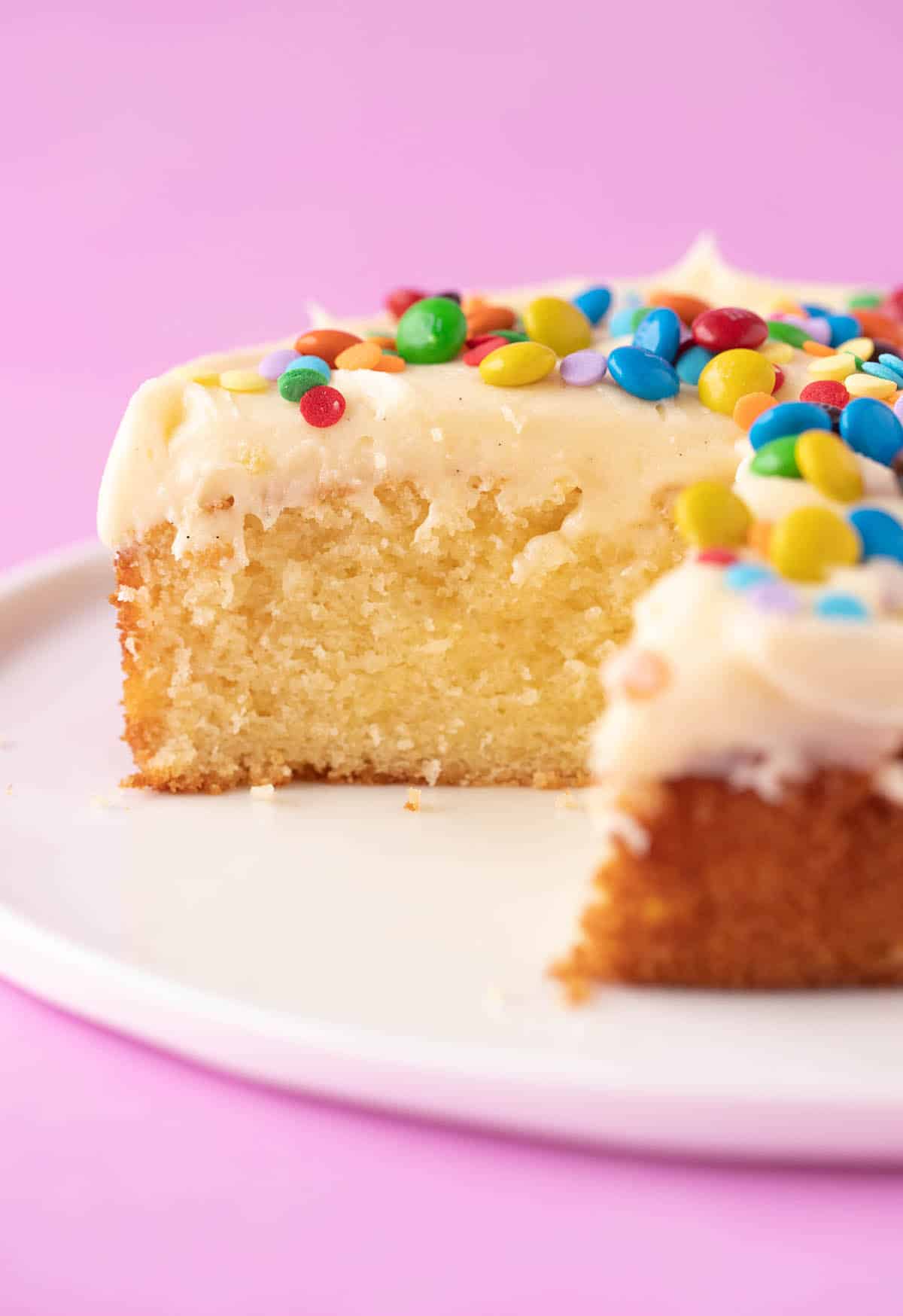
frequently asked questions
Totally. This cake pairs really nicely with vanilla, chocolate or lemon frosting. And it’s pretty nice just by itself too!
Like most baked goods, this cake is best on the day it is made but it will keep well for 2 days. If you want to make it ahead of time, I recommend freezing it. Let it thaw at room temperature and then frost just before serving.
Yes, try my Small Chocolate Cake recipe.
more small batch bakes
Did you make this recipe? Don’t forget to rate the recipe and leave a comment below. Hungry for more? Join me on Instagram, Facebook, Pinterest and Twitter for more amazing recipe ideas.
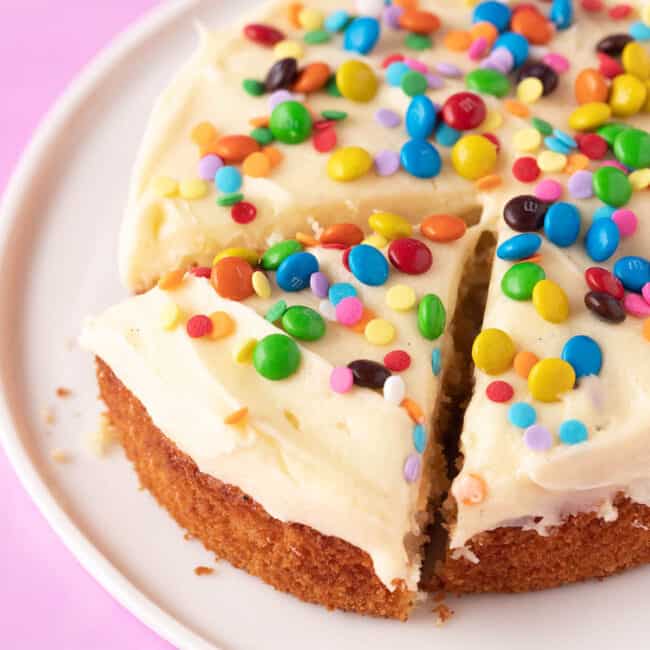
Let’s Bake
Small Vanilla Cake
Soft and buttery 6-inch Vanilla Cake topped with vanilla buttercream.
Ingredients
Vanilla cake
- 105 grams (3/4 cup) plain flour or all purpose flour, sifted
- 80 grams (1/3 cup + 1 tablespoon) caster sugar or granulated sugar
- 3/4 teaspoon baking powder
- 1/8 teaspoon salt
- 75 grams (1/3 cup) unsalted butter, room temperature
- 1 large egg
- 1 teaspoon vanilla extract
- 80 ml (1/3 cup) full fat or whole milk
- 1 tablespoon full fat Greek yogurt or sour cream
Vanilla frosting
- 60 grams (1/4 cup) unsalted butter, room temperature
- 1 teaspoon vanilla extract or 1/2 teaspoon vanilla bean paste
- 125 grams (1 cup) icing sugar or powdered sugar, sifted
- Pinch of salt
- 1 tablespoon full fat or whole milk, room temperature
- A handful of mini M&M’s and confetti sprinkles, optional
Instructions
- Small vanilla cake
Grease and line one 6-inch round cake pan with baking or parchment paper. Preheat oven to 180 C (350 F) standard / 160 C (320 F) fan-forced. - In a medium-sized mixing bowl, add flour, sugar, baking powder and salt. Whisk briefly. Add butter and beat with an electric mixer on low speed, until butter is broken into small pea-sized pieces and completely covered in flour.
- Add egg and vanilla while continuing to mix on low speed. Then, add milk and yogurt. Start to beat on low speed and then turn up to medium speed until batter is creamy and smooth.
- Pour cake batter into prepared pan. Bake for approximately 25-30 minutes or until a skewer inserted in the middle comes out clean. Carefully transfer cake to a wire rack to cool completely.
- Vanilla frosting
Add butter to a large mixing bowl. Beat with an electric mixer on medium speed for 1-2 minutes or until smooth and creamy. - Add vanilla, sugar, salt and 1/2 tablespoon of milk, and continue to beat until smooth and creamy. If frosting is too thick, add extra 1/2 tablespoon of milk.
- Spread frosting on top of cooled cake. Decorate with mini M&M’s and sprinkles, if using.
Notes
Reverse creaming method: This recipe uses the reverse creaming method to help create a soft and fluffy cake every time.
Weigh your ingredients: For best results, I highly recommend weighing your ingredients using a baking scale.
Make ahead: This cake is best served on the day it is made. It will keep well in an airtight container at room temperature for 1-2 days. If you want to make it ahead of time, I recommend wrapping it in plastic wrap and freezing it once it’s completely cooled. To serve, let it thaw at room temperature and then frost it.
You can make the vanilla buttercream ahead of time too. Store it in an airtight container in the fridge for up to 5 days. When you are ready to use it, let it thaw for 15-30 minutes, then use an electric mixer to beat it briefly until smooth and creamy again. Add a touch of extra milk if needed.
Nutrition Information
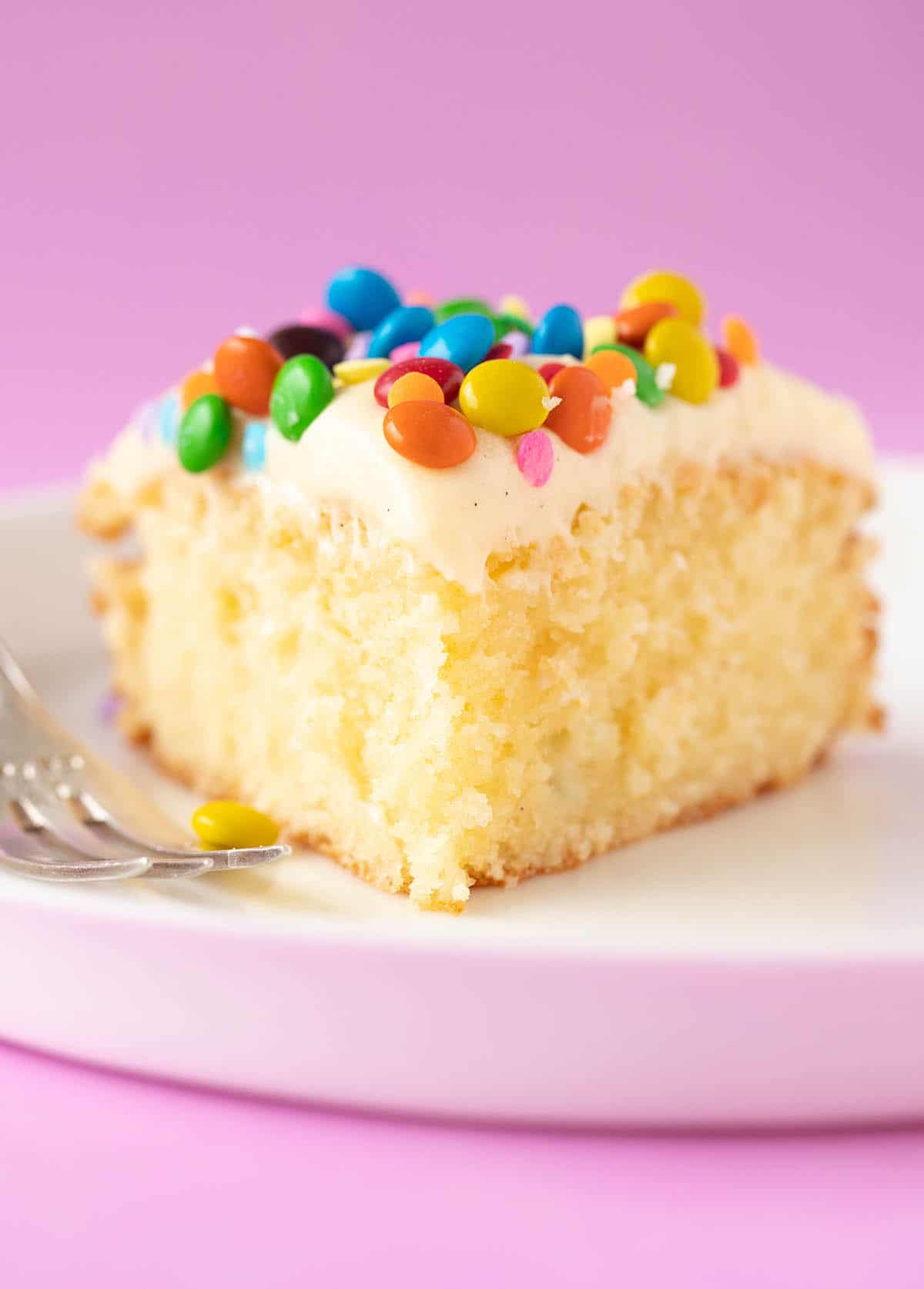
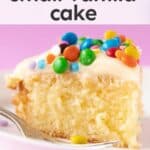

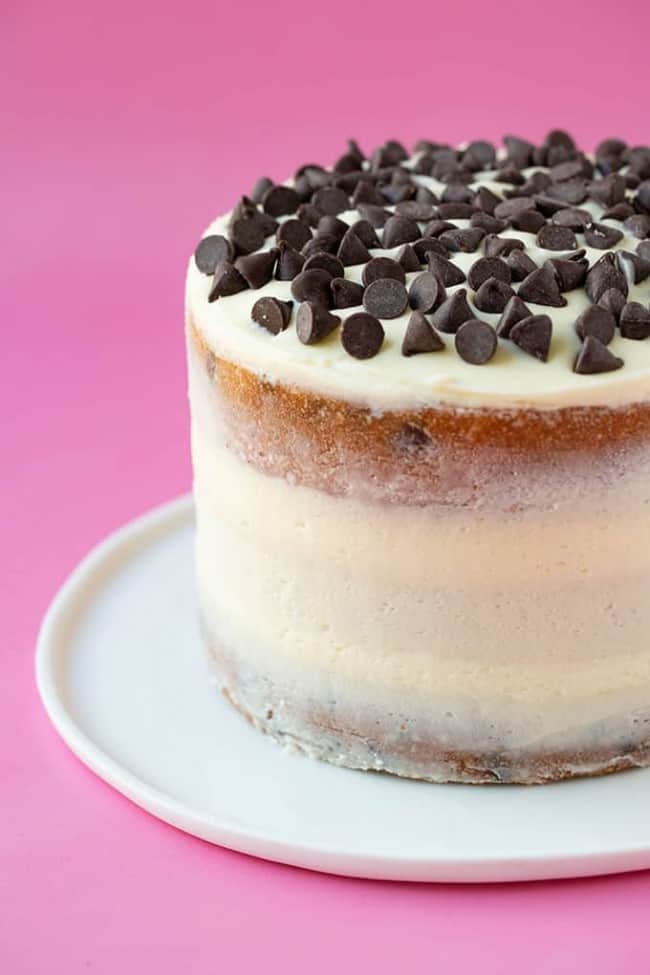
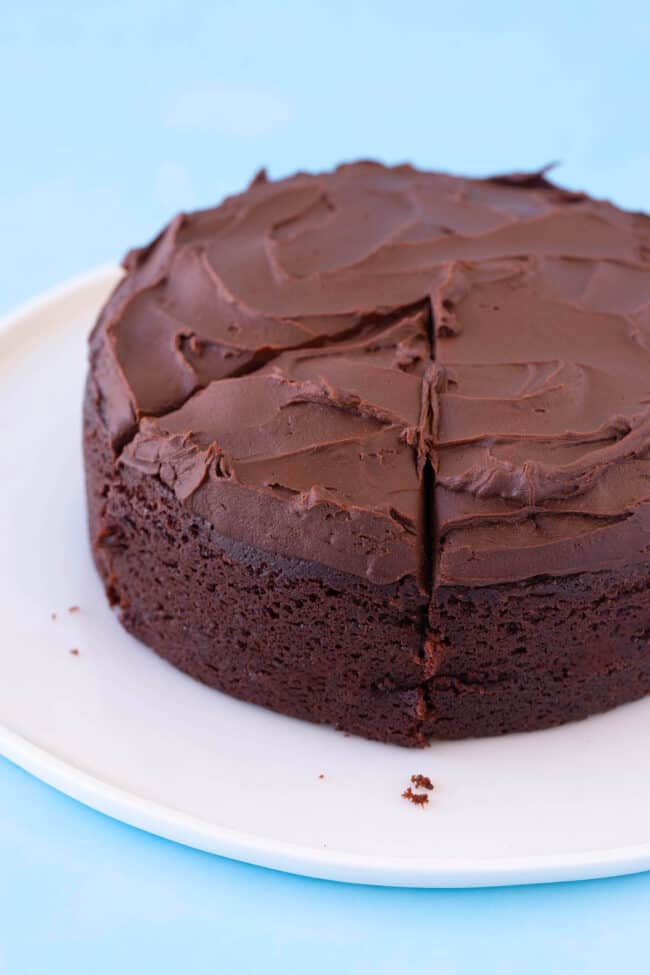
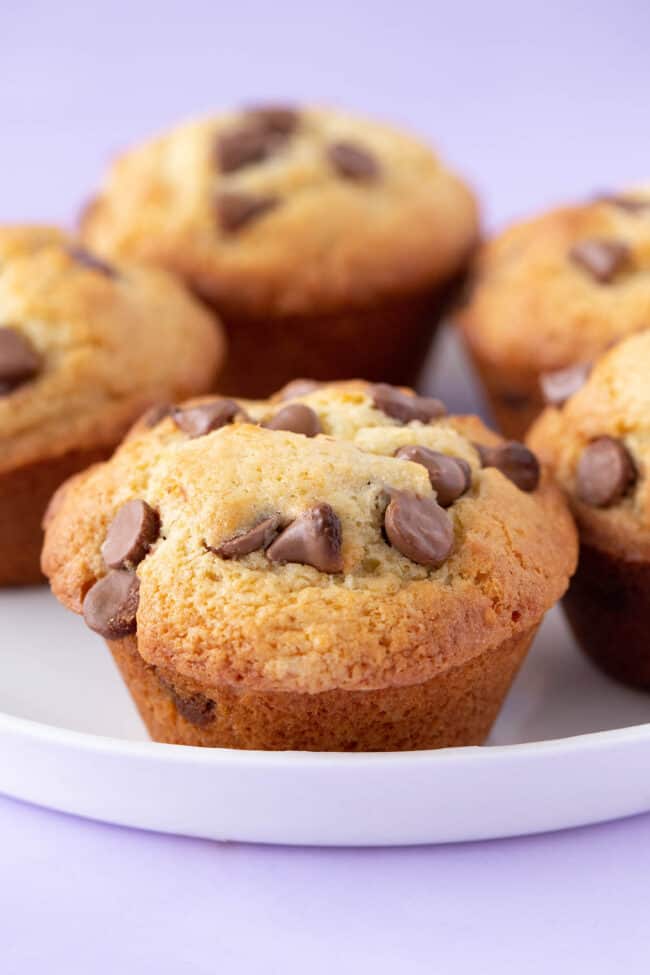
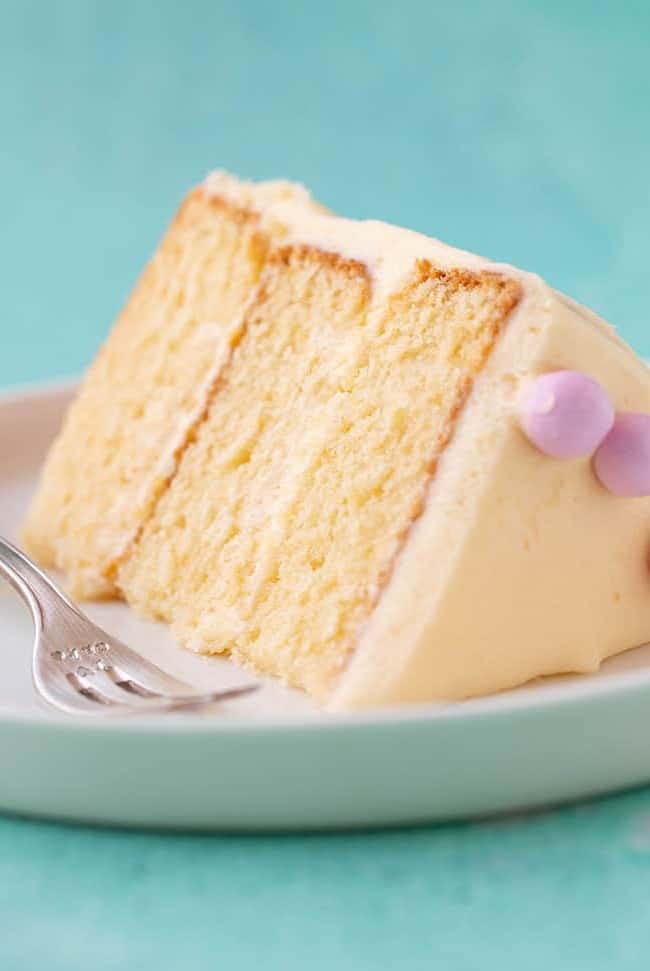
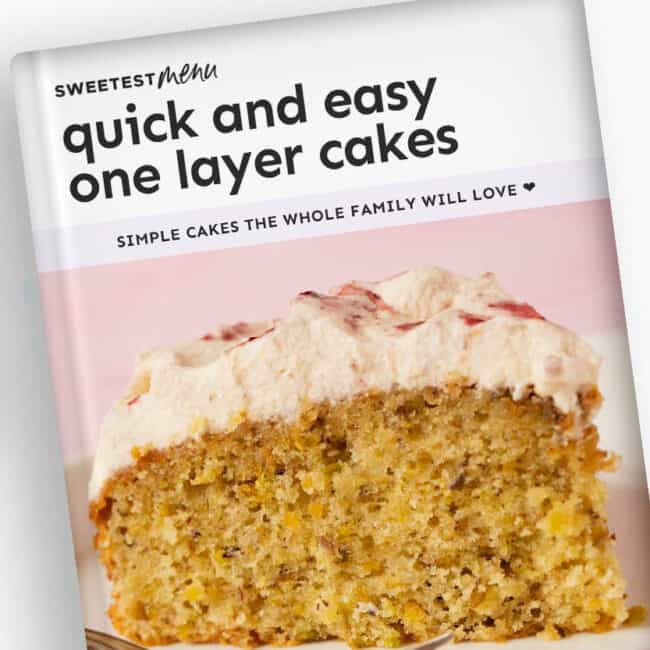
debbie says
Hi Jess
I would like try this recipe using cake flour with 11.4 % protein in it, would I need to use more cake flour, or can I just sub the same quantity out in place of all purpose. If I need to please could you give me gram measures for the cake flour. I would like to try your small choc cake too, so also enquiring about quantities for that too.
Thanks
Jessica Holmes says
Hi Debbie, that seems quite high for cake flour. The plain flour I typically use has 10.9% protein so it sounds fairly similar. Might be worth a shot!
Debbie says
Hi Jessica
I would like to try this recipe using cake flour, please would you let me know how many grams I would need.
Thanks
Jessica Holmes says
Hi Debbie, I haven’t tested this one with cake flour. This article about cake flour might be helpful if you want to experiment.
Sunny says
I was craving a quick simple recipe and the cake is now cooling. I snuck a crumb already and it so so good! Will definitely be my go to vanilla cake recipe from now on 🌟
Thank you for sharing 🙂
Jessica Holmes says
Hooray! I love hearing that Sunny!